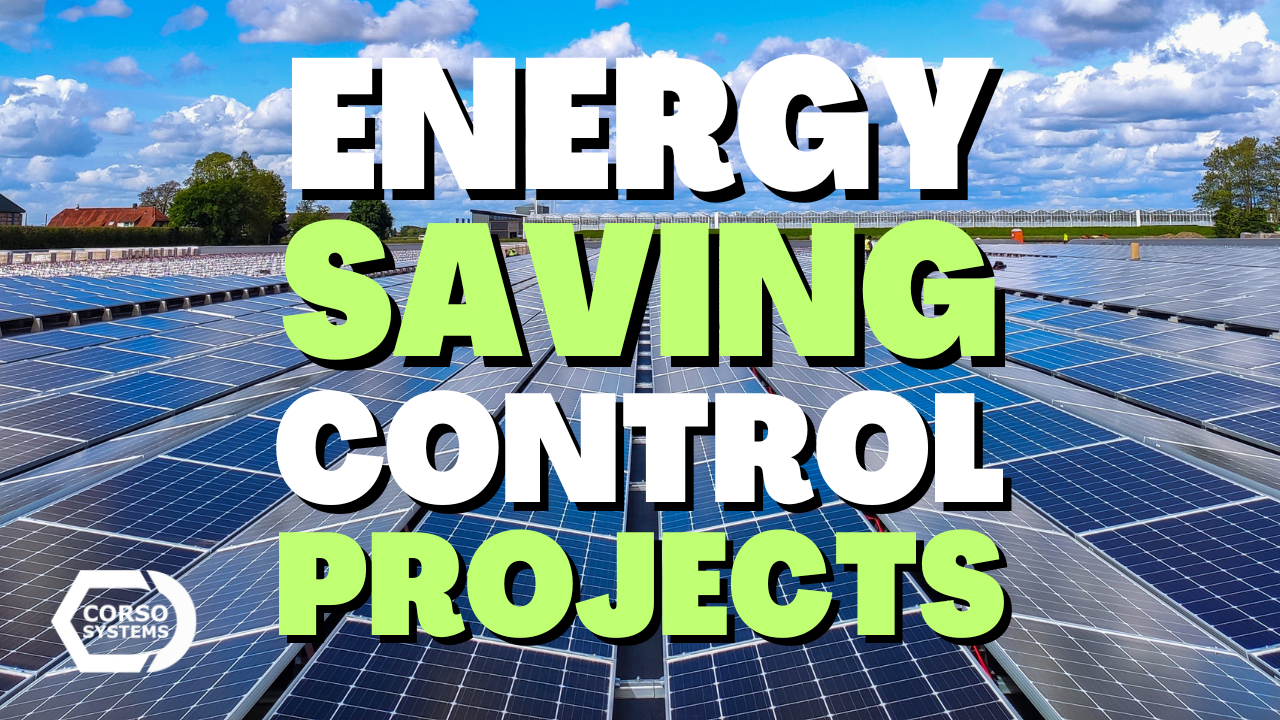Energy Saving Control Projects
Energy use is a major factor for manufacturing facilities. Tracking energy usage at the plant, production line, and equipment levels can help monitor and reduce energy use—and save valuable resources.
Imagine a production facility with enough orders to maintain maximum throughput—but which also has zero downtime, no safety incidents, and operators who are working at 100% capacity. How could a facility like this continue their optimization? Reducing energy costs. Although this facility is fictitious, understanding and reducing energy use is essential for many facilities.
Track energy use at your facility to:
Reduce direct costs for purchasing energy
Improve equipment maintenance schedules
Integrate green energy and conservation initiatives to reduce a process' environmental footprint
Understanding Energy Usage
The first step for reduce energy costs is to understand energy usage. Many facility owners choose electric power meters which can send energy usage data to their process control system. Also, a process historian can store this data so that you can view electricity consumption over time, understand usage metrics, or even correlate the data with billing information to reduce peak-demand use. Take it to another level and set up reports on a daily, weekly, or monthly schedule to help reduce costs even more. You can then take similar approaches with natural gas meters, steam and water flow meters, and air systems.
Reduce Energy Costs & Impacts
Once you’re monitoring energy usage, compare it with billing information to find opportunities to reduce your requirements during peak demand times. Compare your energy data with production information to find more opportunities to save by turn equipment off when it is not in use—or in standby mode for shorter periods.
It can also be worthwhile to change production schedules to work around peak demand usage times for a direct cost savings. For example, a slot machine manufacturing company in Northern Nevada implemented a process to reduce their energy consumption. Their process sends raw slot machine cabinets from a warehouse staging area to operator workstations at various points on the line. When an operator requests a machine, the conveyors turn on and bring the machine to the first radio-frequency identification (RFID) reader on the line. When the machine travels to a certain point, the next conveyor turns on, with subsequent checks turning on conveyors until the machine arrives at the final station. Each RFID check initiates a timer, and the conveyors turn off after 60 seconds of disuse. This reduces energy consumption throughout the production line. When you cannot avoid production during peak demand times, it might also be possible to negotiate rates with utility providers.
Energy Use as a Maintenance Indicator
Understand and detect lingering maintenance issues—while also reducing energy costs—by tracking the current overall energy usage over time compared to historical usage. For example, if air usage over the past year has been fairly constant for different production scenarios, but it starts to increase without an associated change in production, there might be a leak in the system. Steam and natural gas can also benefit from this same approach. Electricity leakages may be more difficult to track down, however comparing electrcity use with other data points from equipment can find the culprits. Please note that energy use monitoring should be used in addition to current maintenance practices and not as a substitute.
Tracking overall energy usage at the plant level, and comparing it with billing to can ensure that what’s used matches with what’s billed. Discrepancies can uncover energy leakages throughout a plant, since energy is a major cost for many manufacturing operations. In addition to cost savings, energy monitoring can also provide insight into a facility’s environmental impact. Tracking energy use may also assist in finding process optimizations and ways to reuse or recycle energy withf heat exchangers or mechanical systems.
Understanding energy usage and costs can provide the foundation for renewable energy projects for solar or wind energy to reduce a facility's overall dependence on utilities—when the cost structure makes sense to invest in an energy-generation infrastructure.
Wrapping Up
Tracking energy usage for cost savings
Energy usage to reduce a facility's environmental impact
Understanding energy usage for process optimization.
For more information on how you can track and trace our energy usage, please look at our Manufacturing Execution Systems and then contact us so we can discuss how Corso Systems can help with your application. Alex Marcy, Corso Systems Founder and CEO, originally wrote this post for Oil & Gas Engineering.
Ready to Reduce Energy Costs?
Schedule a 15 minute call with Cody Johnson in sales to get started!

